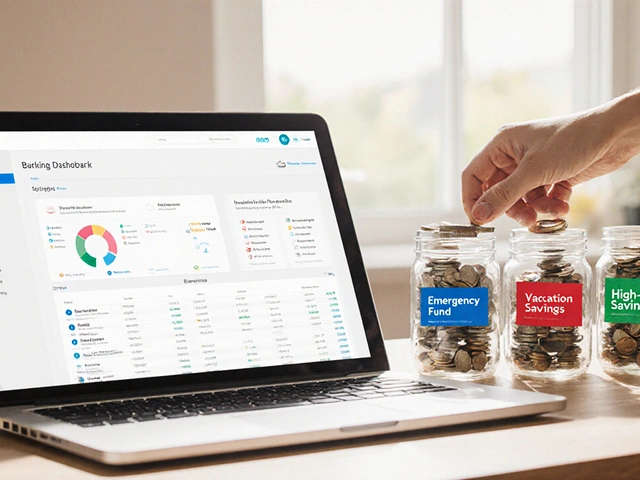
Picture this: you’ve got a killer idea, the sort of thing you actually daydream about while stuck in traffic. You lose sleep thinking someone else is building it in their garage right now. But then reality smacks you: even the best ideas need cash. And let’s be real, very few people can bootstrap a rocket ship using their rainy day fund. So where do you get the money to blast off?
Talk to anyone knee-deep in the startup trenches, and you’ll hear wild stories. Founders max out credit cards, raid wedding gifts, or even convince Grandma to cash in her retirement bonds (she's a legend). But these days, the menu of funding is broader—and trickier to pick from—than ever. Should you cozy up to a slick investor in a tailored suit, launch a public crowdfunding campaign, or hit up the local bank for a loan? Each route comes with its own flavor of stress, rewards, and fine print. Picking the best funding for startups isn’t a one-size-fits-all deal. Let’s lay out the odds, the doors to knock on, and the red flags to dodge if you don’t want to spend your weekends drawing pie charts for strangers over Zoom.
Startup Funding Options: The Main Players and How They Work
People throw around the phrase “raising capital” like they’re ordering lattes, but there are key differences between the paths you can take — and they matter. Not all money is the same. Some investors come with advice, connections, and street cred. Others? They’ll want a piece of your company that’s bigger than you’re planning to give your future CFO. Let’s break down the big dogs on the startup funding block:
Angel Investors: These are individuals with enough cash and the right appetite for risk. They tend to look at very early-stage companies, backing you before you have much to show (“pre-revenue” is the polite way to phrase it). Angels don’t just bring cash — they often want to mentor you, open doors, and plug you into their networks. The cool part? They’re people, not massive firms. You can meet them at events, on LinkedIn, maybe even at your cousin’s wedding.
Venture Capital (VC): These are professional investors who manage large pools of money and funnel it into high-growth startups. Getting VC backing is tough—you’ll need a knockout team, crisp pitch deck, and a business model that can explode across a big market. VCs often come in once you’ve proved your idea, landed some paying customers, or built early traction. They want to see you go big, sometimes globally. They’ll push for fast growth and usually take an active seat on your board.
Crowdfunding: Think Kickstarter or Indiegogo. Here, you pitch your big idea to the crowd, promising pre-orders, perks, or equity, depending on the platform. It’s democratized fundraising, and a way to get marketing buzz while you gather cash. But it works best for things you can show and tell—hardware gadgets, games, beautiful products. You’ll need great storytelling skills and social media hustle.
Bootstrapping: No outside cash, just your own savings, credit cards, or that loan from Aunt Joan. You control everything. No investor drama, no emails demanding “user growth metrics.” Downside: your resources are limited. Bootstrapped companies often grow slower, but keep full control and, if things take off, keep all of the rewards.
Bank Loans and Government Grants: Banks *can* give loans to startups, but it comes with a truckload of paperwork and usually a demand for collateral. Most banks aren’t jazzed about apps or “vision” — they want cash flow and solid assets. Grants, on the other hand, can be a goldmine, especially for tech, clean energy, or science-based startups. They can be hard to get, but some countries are stepping up support for early-stage startups in 2025, especially in sustainability and health sectors.
So, which is the best? The truth is, it depends. For example, in 2024, Crunchbase crunched the numbers: over 36% of North American startups raised initial funding from angels, compared to 44% from VCs at later stages. And don’t overlook local accelerator programs. Y Combinator remains the gold standard, but regional accelerators (like Techstars or Seedcamp) often hand startups $100K-$200K plus invaluable advice. If you’re early, these can be the launchpad you need.

What Really Matters: Choosing the Right Fit for Your Startup
Here’s the thing no one tweets: “best” is subjective. A friend of mine built a SaaS platform and hoarded equity by bootstrapping through years of ramen and late nights. Another pal handed 25% to a VC before he had real traction, then watched his company pivot so fast he barely recognized his own product. Your goals—and tolerance for risk, control, and support—will shape your funding route.
Ask yourself these questions before chasing any pile of money:
- How much control do you want to keep? Heavyweight VCs and even some angels will want decision-making rights.
- How big do you want to get? If you’re going after unicorn status, you’ll probably need VC-level firepower. If you just want a healthy small business, bootstrapping or angel money might be it.
- How quickly do you want to move? Crowdfunding campaigns can launch in weeks. Bank loans and grants can stretch into months of paperwork.
- Is your product visual and tangible? Crowdfunding thrives on physical products people get excited about.
- Are you ready for the “startup treadmill?” VCs expect rocket growth and frequent fundraising rounds. More growth, more meetings, more pressure.
- How strong is your network? Many investments come from friends, family, and their circles. Warm intros count—cold emails, not so much.
To add some context, check out this table (based on actual funding trends up to 2025):
| Funding Type | Best For | Avg. Amount (USD) | Equity Given? | Time to Raise |
|---|---|---|---|---|
| Angel Investors | Early prototypes, pre-revenue | $25K – $500K | Yes, 5%-25% | 1-3 months |
| Venture Capital | Scalable, high-growth startups | $1M – $20M+ | Yes, 10%-40% | 3-9 months |
| Crowdfunding | Product launches, community-driven ideas | $10K – $1M | No/Yes (varies) | 2-6 months |
| Bootstrapping | Small businesses, founders with savings | Varies | No | Immediate |
| Bank Loans | Traditional businesses, assets in hand | $50K – $500K | No | 1-6 months |
| Grants | Deep tech, green/health sector | $10K – $2M | No | 3-12 months |
An important tip: plan for more runway than you think you’ll need. Unexpected costs pop up (trust me, from office chairs to server fees). It’s common for new founders to underestimate how much time and money it’ll take to get to their first real break—even more so in our post-pandemic, AI-powered, wild-west startup climate.
And don’t get starry-eyed about the biggest check. If you fill your cap table with too many investors too soon, future funding rounds get messy fast. A simple, clear share structure makes you look good to investors down the road (and saves headaches at 2 am).

Making the Call: Tactics and Pitfalls for Startup Founders
Once you’ve sized up your options, how do you actually secure the funding you want? First off, prep your story—and your numbers. Investors want proof you understand your business and your market inside and out. They aren’t just buying your product; they’re betting on *you.* Practice your pitch with people outside your bubble. If your grandma, your partner (like my wife Larissa), and your techie friend all get the idea, you’re on the right track.
Here are real-world tactics and common tripwires to avoid:
- Network—don’t spam. The most successful fundraising stories come from founders who build relationships before they need a check. Go to events, join founder Slack groups, say yes to coffee invites. Get known for sharing value, not just asking for money.
- Avoid the "bad investor" trap. Not all angel and VC money is good money. Watch for fame-hungry investors who offer vague advice and demand crazy equity. Ask other founders for backchannel references. If an investor’s name scares people off, run.
- Read the fine print—always. Term sheets and SAFE notes are simple on the surface, but hidden clauses can take big bites out of your company. Don’t skip legal reviews.
- Use milestones, not wild projections. Investors want to see traction. Show off early sales, pilot users, signed letters of intent—actual momentum is more persuasive than ambitious spreadsheets.
- Don’t ignore dilution. Giving away too much too early can leave you sidelined from your own company. A common first-time founder mistake: selling 40% in the first round, then struggling to raise more later. Keep the pie as big as possible for yourself and your team.
- If bootstrapping, plan for belt-tightening. Set your burn rate, cut unnecessary costs, and focus only on the features or services that actually move you toward your big goal. It’s tough, especially if you’re used to a steady salary.
- Think strategically. Sometimes, getting a smaller investment from the right person (who opens the right doors) beats raising a giant round from a hands-off fund. Fit matters. The story of Canva is often cited: they picked early investors who became key partners, not just silent check-writers.
- Don’t let fear of rejection stop you. Even if you pitch 50 VCs and get 49 rejections, it only takes one "yes." Persistence matters more than a flawless pitch.
Interesting fact: according to the National Venture Capital Association, in 2024, U.S. startups raised more pre-seed money from syndicate angels than ever before—showing the appetite for early risk is still strong. Globally, Singapore, Berlin, and Toronto have surged as funding hotspots for local startups, not just Silicon Valley.
Finally, remember that every funding choice shapes your journey. There’s no perfect answer—only the best fit for your goals and style. Some of the world’s top companies (like Mailchimp and GoPro) bootstrapped all the way. Others (like Airbnb and Stripe) played the VC game to win big. Take the time to research, talk to people who’ve been there, and never lock yourself in with partners you wouldn’t want around your dinner table. The more you understand your funding options, the less “luck” you’ll need to succeed.







Write a comment